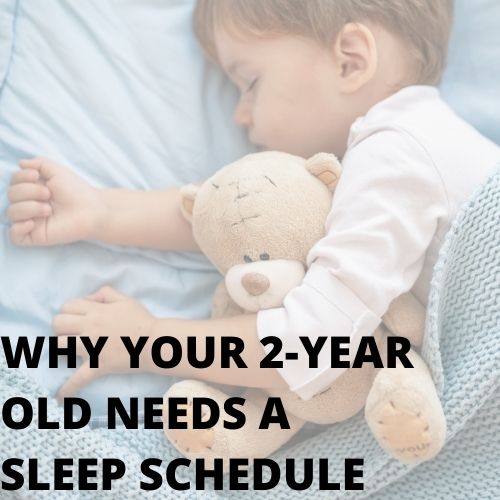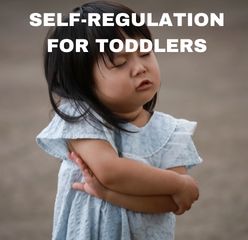According to the American Academy of Sleep Medicine, 2 year olds are supposed to have between 11 and 14 hours of sleep in 24 hours. That includes their naps. You might be reading it and wondering how on earth your 2 year old has been surviving on so much less. Lucky you if you are wondering why they have so much more than that instead! Either way, a 2 year old sleep schedule may be the way to ensure your toddler is well-rested.
Toddler sleep can be tricky to figure out as they are not always able to determine for themselves that they need to wind down and get some rest. The consequences of getting too little sleep are just as detrimental as getting low quality sleep and at irregular times of the day.
Effects of an irregular sleep pattern on a 2-year old
The effects of irregular sleep are varied in range from emotional to mental to physical.
Bates et al. liken a child with an irregular sleep pattern to any human being with a case of jet lag. Indeed, watch a 2 year old with no established sleep schedule closely enough and you are likely to see the typical signs of jet lag like irritability, fatigue and some amount of confusion. As Bates et al. explain, the same way that some adults appear to be less affected by jet lag than others, you will also find that some 2 year olds seem less affected by their irregular sleep patterns than others.
Just like in adults, irregular sleep patterns also lead to issues with weight management for 2 year olds. Unsurprisingly, it also affects their self-esteem.
RELATED: What to do about the 2 year old sleep Regression
5 Benefits of having your child on a regular sleep schedule

- Well-adjusted at preschool
Research suggests that having your toddler on a regular sleep schedule makes them better adjusted at preschool or nursery. They are able to better focus on their school activities and pace themselves as they learn and absorb information.
- Low levels of family stress
When preschoolers have regular sleep patterns, it leads to lower levels of family stress. That makes a lot of sense because having a toddler who has regular patterns of sleep brings some form of predictability and therefore a kind of stability to the household. The family is able to better plan for things and this leads to lower levels of stress for everyone in the household.
- Improved creativity
Without the haze and irritability of sleepiness and sleep deprivation worrying them, toddlers are able to come up with creative ideas for problem-solving. It is easier for them to let their creative juices flow because they are not focused on how tired they are. As adults, you know how difficult it is for you to be creative when you are tired. It is more difficult for a 2 year old to handle that tiredness and try to be creative at the same time.
- Better social relationships
Exactly the same as an adult, a toddler will feel less interested in socializing or spending time around people when they are tired or are suffering from the effects of irregular sleep. You may infact notice that your 2 year old appears anxious around people when they are in this state of over-tiredness or fatigue. Scientists have found an apparent “cycle of social separation and withdrawal” that comes about as a result of losing sleep.
- Parent-child attachment
With the family getting better sleep due to your toddler’s regular sleep patterns, you will find that you are able to establish a stronger bond with your toddler. They are less irritable and therefore easier to communicate with. You are able to enjoy your time with them more and they with you. In addition, if you take an active part in your 2 year old’s bedtime and nap times, that only provides more opportunity for you to bond. For example, you might read them a book to sleep or sing them a song. You might just sit next to them in silence while they fall asleep.
We know a few of the benefits of having your toddler on a sleep schedule but what is a good schedule for a 2 year old? What time should a 2 year old go to bed?

2 Sample sleep schedules for 2 year olds
Schedule A
- Morning wake up: 6-7am
- Nap time: 12-1pm
- Wake up from nap: 2-3pm
- Night bed time: 7-8pm
Schedule B
- Morning wake up: 8-9am
- Nap time: 1-2pm
- Wake up from nap: 3-4pm
- Night bed time: 8-9pm
Looking at these two typical schedules, you might be far from achieving these, or any kind of sleep schedule for that matter, with your 2 year old. Do not despair. You can work at it.
How to get a toddler on a sleep schedule – 9 tips
To start with, be gentle on and patient with both yourself and your 2 year old. Then follow that up with a combination of any of these tips:
- Pick bedtimes and stick to them. To see results or figure out if your chosen times are ideal or not, you need to stick with them. Choose times based on when you think you will have sufficient time to go through a full bedtime routine with your toddler. Those times might end up being a little different from the times in my sample schedules above but they should not deviate too much. If they are too different from either schedule, it means you are not leaving much time in the day for yourself as a parent and your toddler is either going to bed too late or waking up too early. Or both.
- Get started early. Allow time in your sleep schedule to actually get that sleep schedule going. Particularly at the beginning of a change, your toddler will need time to adjust. There should be provision for delay tactics and any extra cuddles that your little one might need as they get into the groove of their routine.
- Let them stay active in the day. Except for nap time, you should allow your toddler to be as busy and active as they like in the day time. Let them expend all that energy that 2 year olds seem to have. It will help them sleep deeper at night.
- Watch the sugar. We all know what sugar can do to kids. Try not to let them have sweets, chocolate and other sugary treats late in the day. The last thing you need when your night time routine starts is a hyperactive toddler who is difficult to calm down for sleep.
- Set the scene. As part of your night time routine, it is important to create a less stimulating environment. Dimmer lights, a more quiet environment, relaxing music, all help to calm your 2 year old down and help them mentally wind down for bedtime. In the afternoons,
- Keep it short and sweet. Your sleep routine both at night and for nap time during the day should not be lengthy. I would recommend about 30 minutes in total. When you first switch things up and try to introduce a routine, it might be a struggle. You might spend some more time getting them to sleep and it could go on longer than you like but persist and things will get easier.
- Give them a security…something. It could be a blanket, a soft toy or an article of your clothing that smells like you and makes your toddler feel like you are next to them.
- Have them stay in bed. Until it is officially time to wake up. If you have created a schedule that ideally has them awake at 7am, for example, and they wake up at 6:30 am instead, have them stay in bed playing with a toy or chat with them while they lay in bed until 7am. This helps to get them adjusted to remaining in that sleep setting for a specified period of time.
- Assess your routine weekly. Then make changes where necessary. Any less than five days to a week means that you are not giving your 2 year old sufficient time to get used to their sleep schedule. If they do not get used to it, you cannot tell if it works for your toddler and the family or not. Any more than a week on a sleep schedule that is not quite working is simply torturing yourself and your toddler.

In conclusion…
Life happens. Routines get shaken up by anything from illnesses to work. Like I always say, as with anything parenting, you can only try. Sometimes, you’ll achieve your goals. In the case of creating and establishing a sleep schedule for your 2 year old, the keys are to remain consistent and not be afraid to switch things up if you find they are not working for your toddler and the rest of the household.






